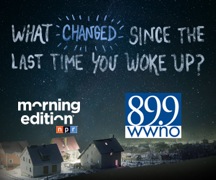HANO homeownership program among largest in the country
15th February 2023 · 0 Comments
By Michelle Liu
Contributing Writer
(Veritenews.org) — Six months after buying her first home last year, Dianne Hall was still marveling at the details of her condominium in Algiers — the fireplace in the living room, the freshly painted pastel walls and cabinets, the breakfast bar bordering the kitchen.
Hall, a client of the Housing Authority of New Orleans, sees her recent property purchase as a sign that her life is changing for the better. The 57-year-old spent about 15 years paying rent in New Orleans East before she purchased the home for $110,000 last August through HANO’s homeownership program. Now, she pays about $350 a month toward her condo fees and mortgage, she said, with HANO helping to cover the rest. That’s about as much as she was paying in rent before as a Section 8 tenant, Hall said, but now that money is going toward something of her own.
Over the past two decades, the small homeownership program has packed an outsized punch for Hall and hundreds of other HANO clients-turned-homeowners.
For clients, owning a home can offer a degree of long-term stability often missing for renters — who often find themselves having to relocate repeatedly and navigate a tough local housing market for affordable housing — the program’s proponents say.
Regulations by the U.S. Department of Housing and Urban Development allow public housing authorities to create homeownership programs for their Section 8 clients, using federal subsidies that would ordinarily subsidize privately owned rental properties to fund mortgages that help low-income clients build equity instead.
The program’s first homeowner secured a mortgage in 2001. Since then, HANO has worked with more than 500 people to buy homes across New Orleans. There are about 200 current participants, according to HANO. In comparison, the agency serves about 18,000 Section 8 rental clients.
But recent HUD data places New Orleans as having one of the country’s largest such programs — in real numbers, not as a percentage of the population served by HANO. The program compares in size to those run by much larger housing authorities, coming in fourth after Philadelphia, Chicago, and the state of New York.
The program has helped new homeowners work toward self-sufficiency, HANO Director of Client Services Jedidiah Jackson said.
To be eligible for the program, prospective homebuyers must be in good standing with HANO and be employed full-time, making at least $14,500 a year. The clients must have a minimum credit score of 640 and at least $3,000 saved for the purchase. HANO also requires prospective homebuyers to take homebuying and financial literacy classes through a HUD-certified agency.
For working families, HANO assists with mortgage payments for 15 years; for elderly and disabled clients, those payments extend through the course of the mortgage. The assistance amount, as with Section 8, varies depending on a client’s particular situation, though clients pay 30 percent to 40 percent of their income each month, said Carol Griffin, a housing counselor with HANO.
The homebuyers can also access other pools of money, including the city’s soft second mortgage program and grant programs from participating lenders and developers, according to HANO.
For Hall, the process of figuring out her paperwork and finances was worth the trouble. “I put my money on the side and sacrificed,” Hall said. “[HANO] helped me out a lot, and the loans helped me out.”
To Griffin’s knowledge, no one in the program has faced foreclosure. She said she does not track clients after they “roll off” — which can happen when their income grows to where they no longer qualify for assistance, or when a homebuyer dies.
Still, there are challenges, such as getting lenders on board to accept payments from dual sources each month, Jackson said. And given the surge in home prices during the pandemic, the limited stock of affordable houses in city limits has made the search process arduous for some participants, he added.
Rising property insurance costs spurred by hurricane and flooding risks are also stretching the homeowners thin.
Recent homebuyers have ended up moving to New Orleans East given the lower property costs in the area, though HANO has aided purchases across the city, including in Gentilly, Uptown, Mid-City and the West Bank, Griffin said.
Griffin has worked in the program since 2006, and over time, she’s observed firsthand the effects of the program on clients and their families. The program has boosted the confidence of its participants, Griffin said, and houses mean stability for the parents and children who live in them: “When you are in one place, it makes a difference.”
Many of the program’s homebuyers learn of the opportunity through word-of-mouth, Griffin said, from other participants.
Indeed, after closing on her own house, Hall has been handing out Griffin’s number to other Section 8 tenants she knows.
“A lot of people think they can’t do it,” Hall said. “It needs to be known more … that it’s possible.”
For more information about the homeownership program, visit www.hano.org/Tenants/Homeownership or call (504) 670-3300.
Verite (veritenews.org), where this article originally appeared, is a non-profit news outlet based in New Orleans.
This article originally published in the February 13, 2023 print edition of The Louisiana Weekly newspaper.



